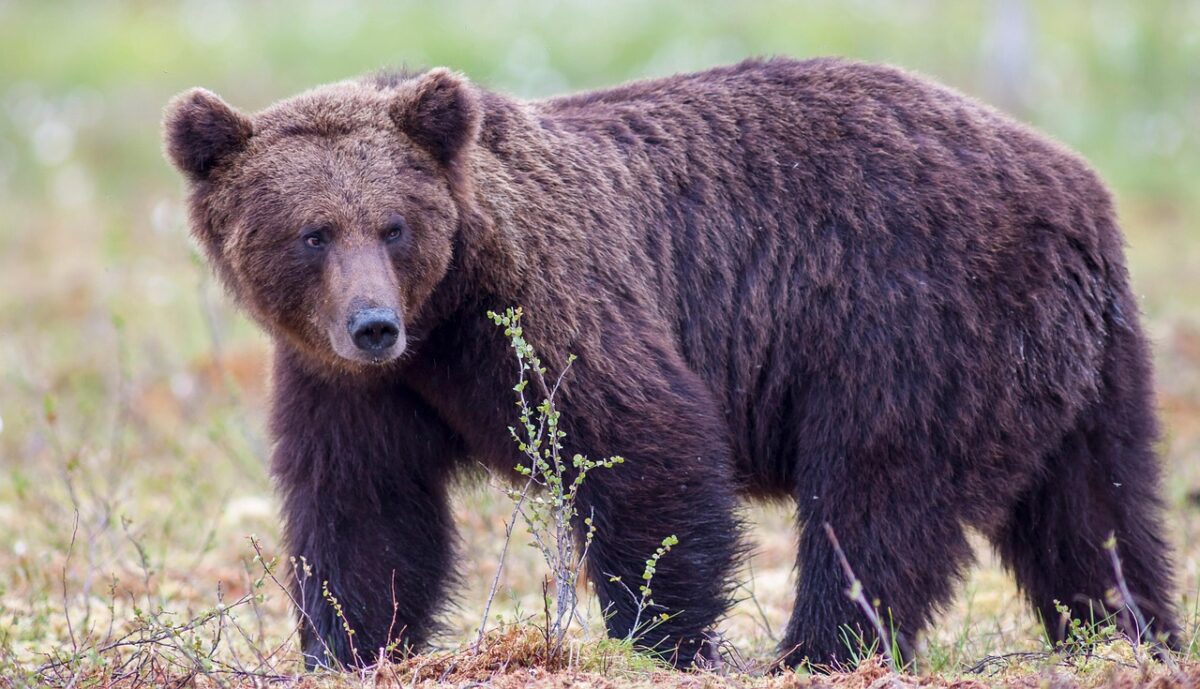Picture this: you step out onto your back porch for a peaceful morning coffee, only to discover you’re sharing your outdoor sanctuary with some of America’s most dangerous creatures. While we often think of deadly animals as exotic beasts lurking in faraway jungles, the truth is far more unsettling. Some of the most lethal animals on the continent are practically next-door neighbors, hiding in our woodpiles, garden sheds, and even our favorite hiking spots. From tiny spiders that pack a punch more powerful than their size suggests to massive predators that can appear without warning, these backyard threats are closer than you think.
White-Tailed Deer – The Silent Highway Killer
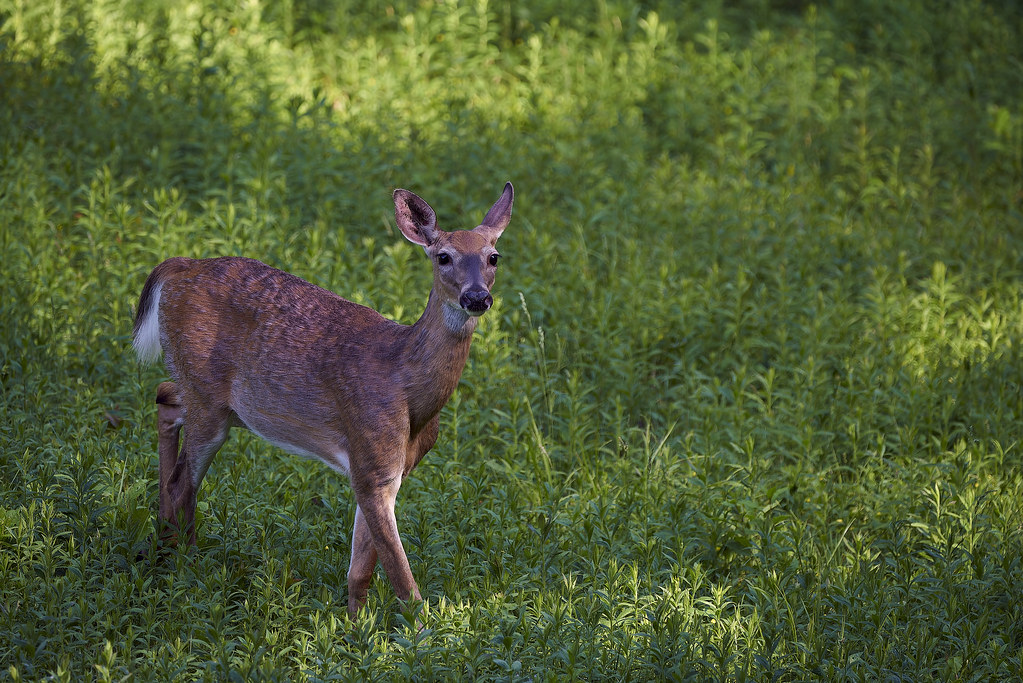
You’d never expect Bambi to top a list of deadly animals, but white-tailed deer are responsible for roughly 120 to 440 human deaths every year. These graceful creatures might look harmless grazing in your backyard, but they’re actually one of the deadliest animals in America. The vast majority of these deaths aren’t from direct attacks, but from devastating car collisions.
When deer jump into roads, drivers lose control trying to avoid them or are killed in the resulting crashes. This danger peaks during fall breeding season when bucks chase does across roads, often during shortened daylight hours. The combination of rutting season and reduced visibility creates a perfect storm for tragedy.
Black Widow Spider – The Backyard’s Tiny Terror

Black widow spiders are among the deadliest animals in America, killing around seven people every year. These notorious arachnids are the most venomous spiders in North America, with around 2,600 bites reported to the National Poison Data System annually. The larger female spiders are deadliest, recognizable by their shiny black bodies with distinctive hourglass-shaped red markings.
They live in quiet spaces like closets, basements, garages, woodpiles, and around houses under eaves, trash cans, and outdoor structures. Remarkably, no one in the United States has died from a black widow spider bite in over 10 years, though the venom does cause intense pain, muscle rigidity, swelling, vomiting and sweating.
Brown Recluse Spider – The Flesh-Eating Phantom
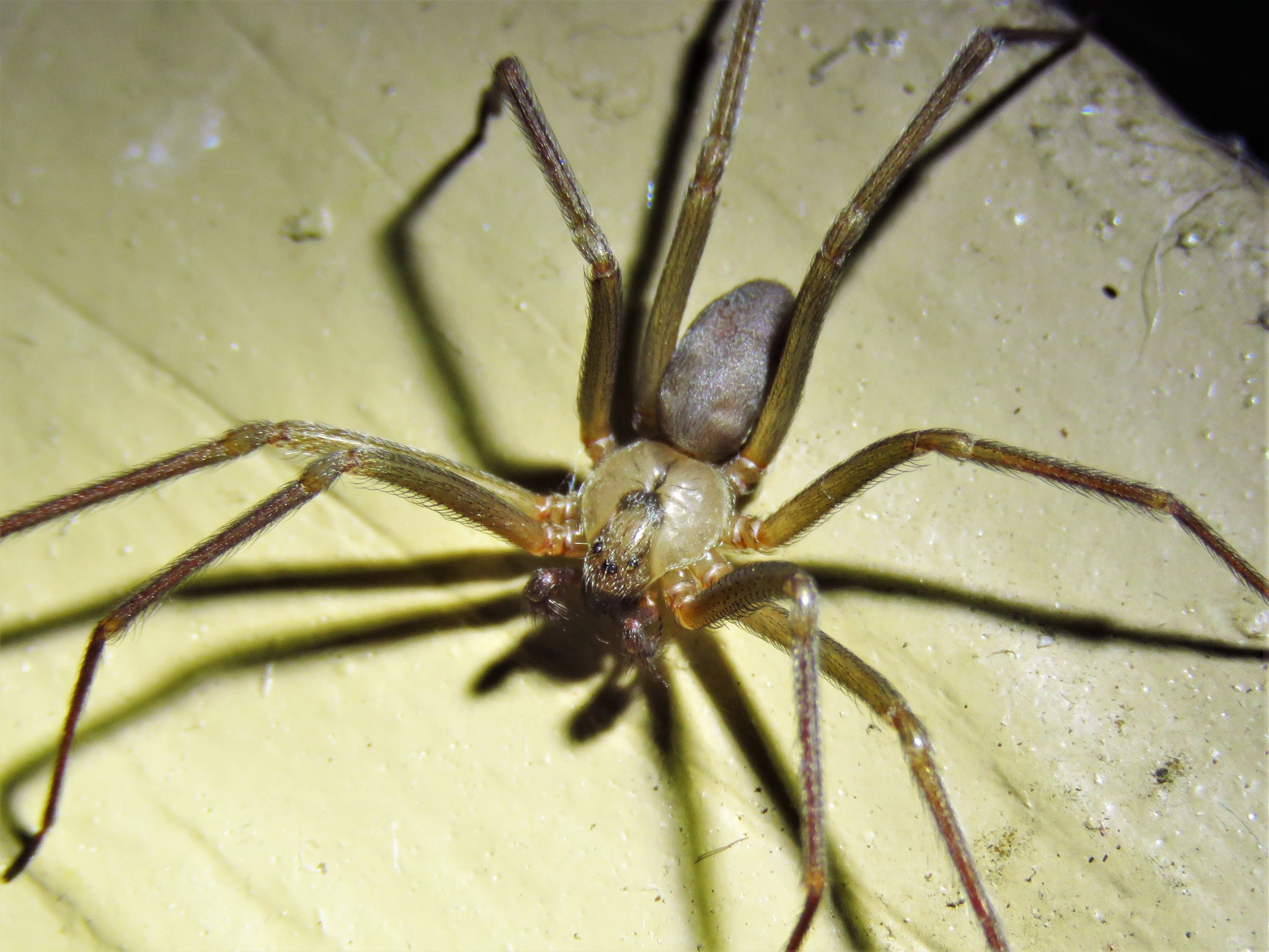
If black widows are the dramatic villains of the spider world, brown recluse spiders are the silent assassins. The brown recluse is one of two spiders in North America with dangerous venom, the other being the black widow. These spiders measure approximately two-fifths of an inch in length with a dark violin shape located behind their three pairs of eyes, giving them the name “fiddle back” spider.
They frequently build their webs in woodpiles, sheds, closets, garages, and other dry, undisturbed places, and when dwelling in human residences they seem to favor cardboard. Most bites are minor with no dermonecrosis, but a small number of brown recluse bites produce loxoscelism, a condition where the skin around the bite dies. These bites can form necrotizing ulcers that may take months to heal and grow as large as 25 cm (10 inches).
Eastern Copperhead Snake – The Master of Disguise
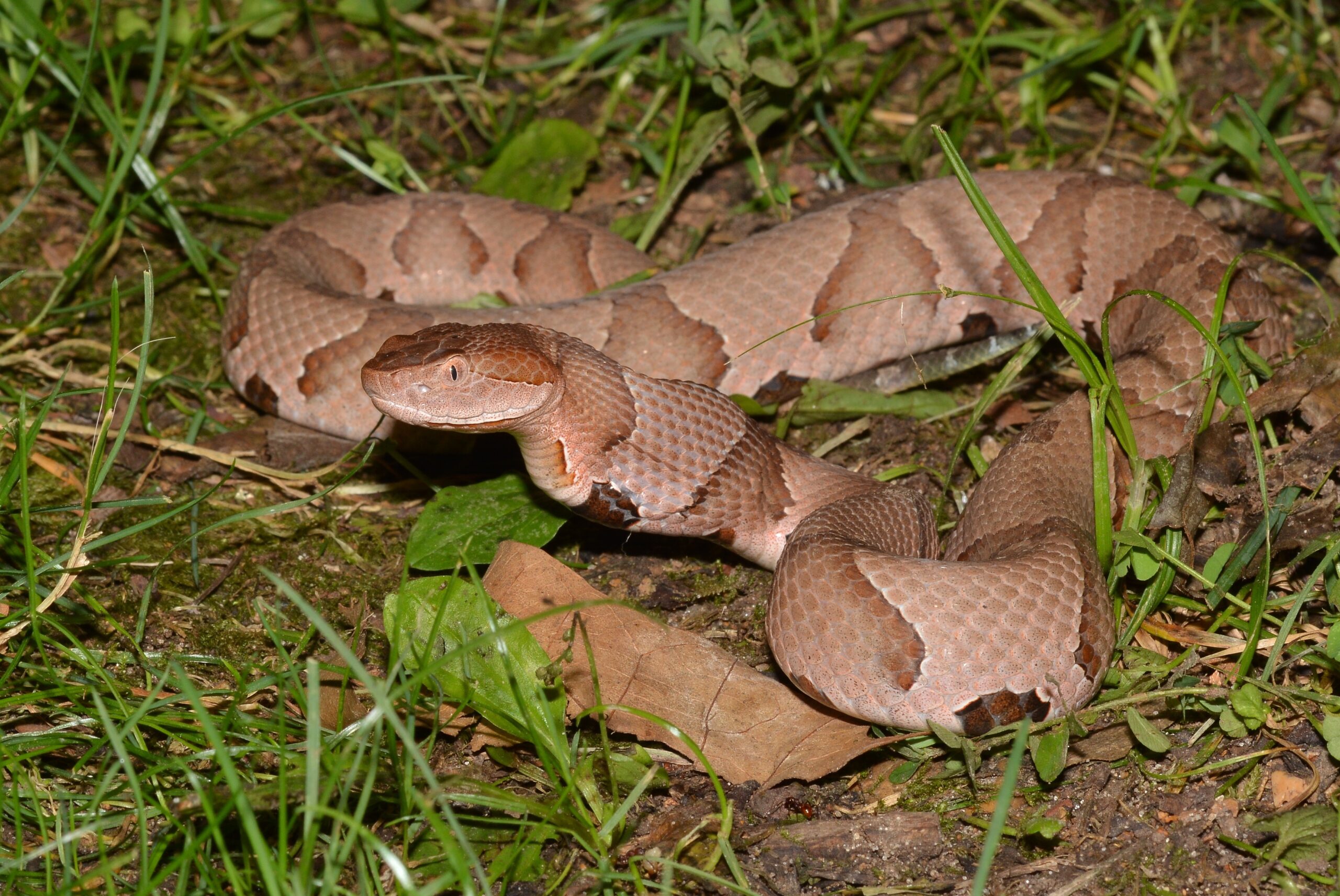
Of all venomous species that live in South Carolina, the copperhead is typically the one that people come across most often, and this pattern holds true across much of the eastern United States. Copperheads bite more people in most years than any other U.S. species of snake. This copper-colored snake has an unmarked head and chestnut brown, hourglass-shaped crossbands along its body.
Unlike most venomous snakes, copperheads give no warning signs and strike almost immediately if they feel threatened. However, copperhead venom is not very potent and their bite is very rarely fatal to humans. They live in mountains, forests, rock piles, woodpiles, under bushes and in suburban housing areas, usually with a brownish, copper-colored body.
American Black Bear – The Suburban Giant

Bears kill between two and five people every year on average, making them a serious backyard threat in many regions. The black bear grows up to 6 feet tall and 600 pounds in weight, with small heads with rounded ears and flat backs. More common and widespread across the USA than grizzlies, black bears can become aggressive if they feel threatened or if they’re in search of food, and while typically less aggressive than grizzlies, they are involved in more human encounters due to their larger population.
They often stray into people’s backyards, searching for food in trash cans and bird feeders or damaging beehives and cornfields. Unlike grizzlies, black bears are generally timid around humans and will prefer to keep away, however, females with cubs can get defensive when they feel cornered and possibly charge at you.
Timber Rattlesnake – The Mountain Menace
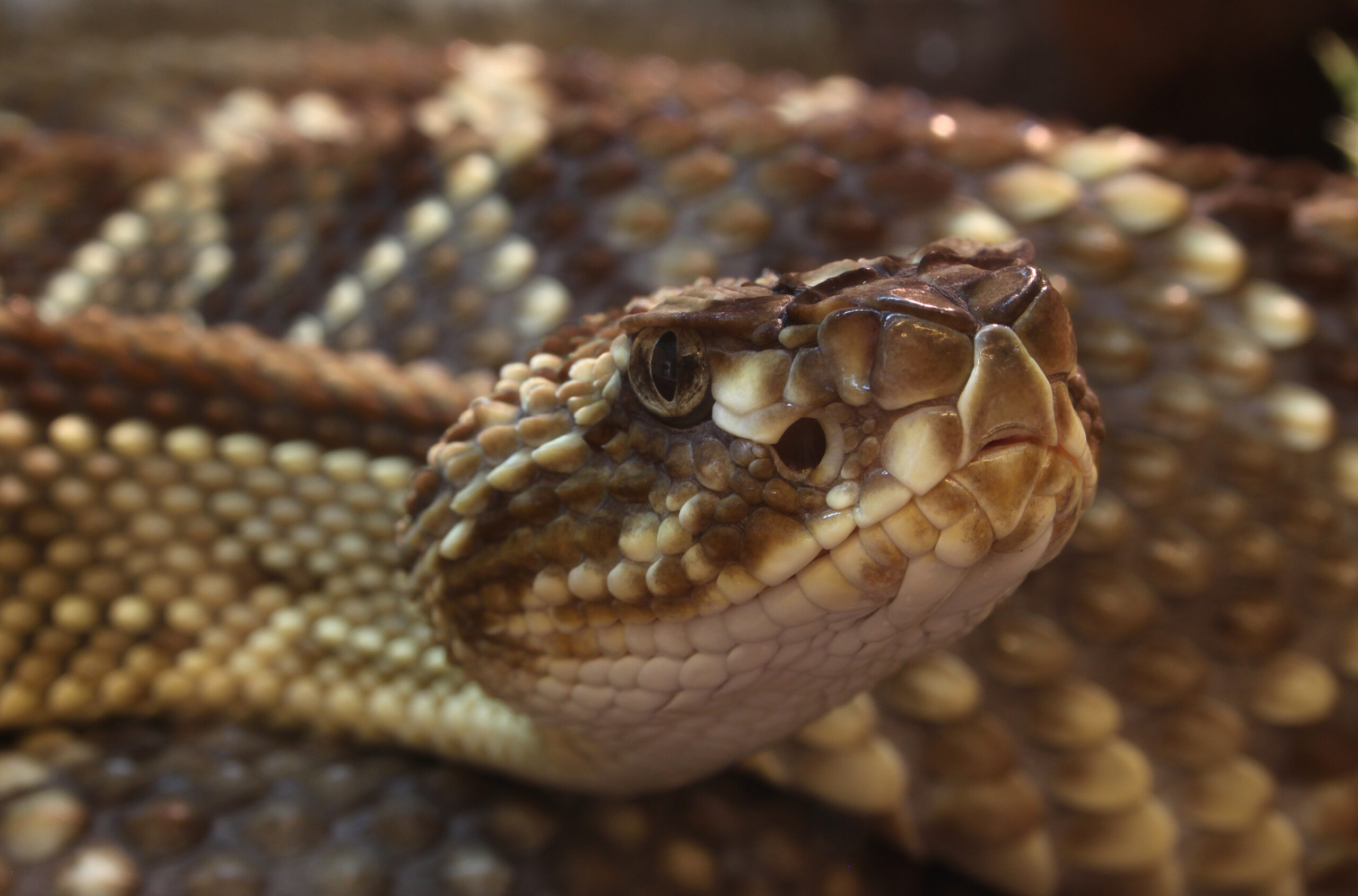
The timer rattlesnake’s combination of considerable size, sharp fangs, and potent venom makes this reptile the deadliest snake species in New York, and they pose similar threats across their range. These snakes can grow up to 60 inches long and are gray to black, distinguishable from the black crossbands along the backs of their heavy bodies. In the upstate timber rattlesnake adults may average 3 to 4 feet in length, however, they can reach 5 feet long.
Just like copperheads, timber rattlesnakes ambush their prey and will lay in wait for them to come within striking distance, with their diet including everything from rodents and amphibians to small birds and mammals. Rattlesnakes have a generally mild disposition and aren’t eager to bite humans, but when they do strike, the results can be devastating.
Mountain Lion – The Silent Stalker

Cougars are large cats, and although not usually aggressive, have been involved in attacks on humans as well as causing death, with cougars having killed 27 humans in the past hundred years. Mountain lions, or cougars, are formidable predators found primarily in the western U.S., they are solitary and elusive, making them less likely to encounter humans, however, when they do, they can be extremely dangerous due to their size, strength, and predatory instincts.
About the same size as a leopard, this solitary cat is found in a variety of American habitats, including swamps, grasslands, and coniferous forests in the mountains, and basically, if there’s enough cover and an abundance of prey, the cougar can adapt and thrive. Hikers and outdoor enthusiasts in mountain lion territories should be vigilant, particularly during dawn and dusk when these animals are most active.
Domestic Dog – Man’s Deadliest Friend

While not technically wild animals, domestic dogs deserve mention on this list because of their proximity to human habitations and their potential for causing serious harm. Dogs are responsible for numerous fatalities each year, particularly when they attack children or elderly individuals. Most fatal dog attacks involve large, powerful breeds, though any dog can become dangerous under the right circumstances.
The danger often comes not from wild or feral dogs, but from pets that have been inadequately socialized, poorly trained, or are protecting their territory. Even friendly family dogs can become aggressive when they feel their home or family is threatened. The key factor is that these animals are literally living in our backyards, making encounters inevitable and sometimes tragic.
Alligator – The Living Dinosaur in Your Pool
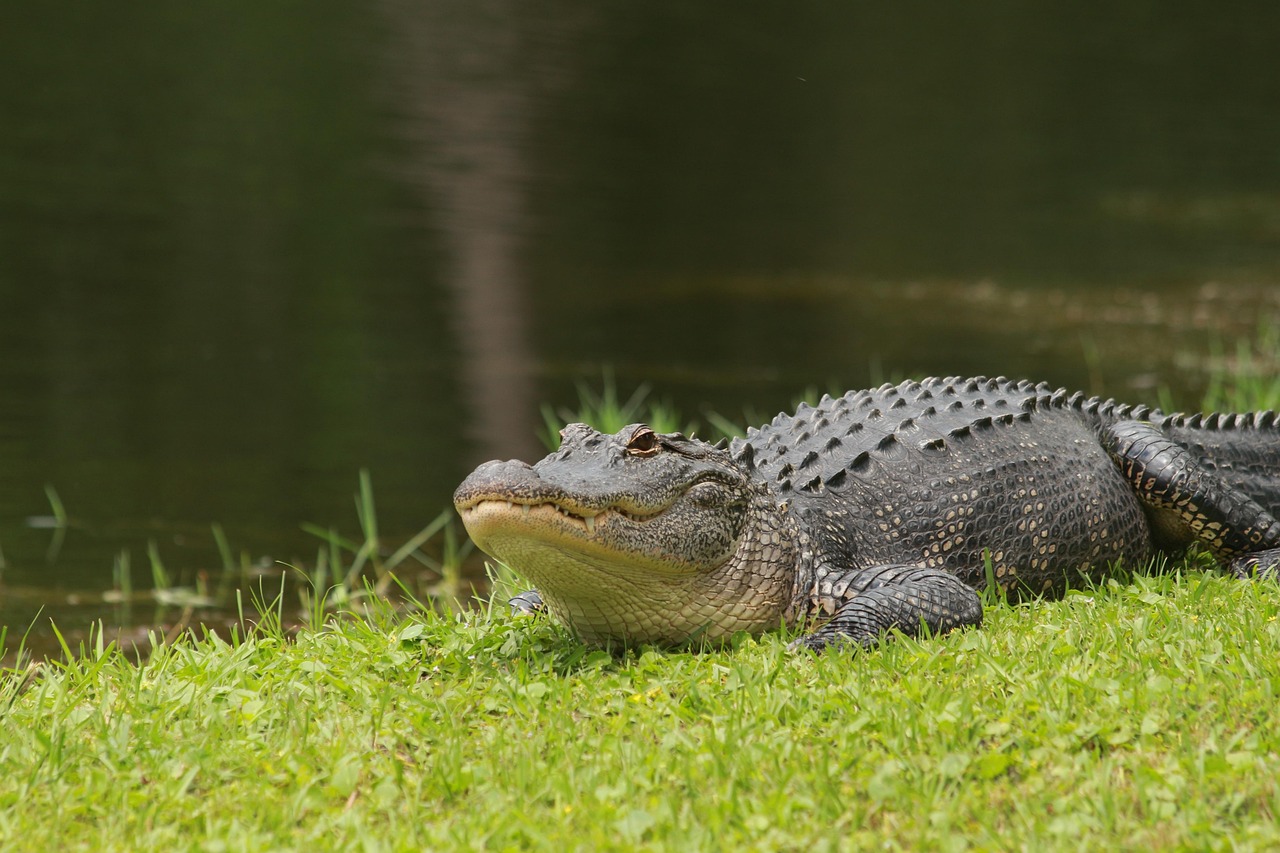
Measuring over 15 feet and weighing half a ton, these ruthless water-dwellers are tenacious in their hunt for flesh, boasting a toothy clamp strong enough to crush the bones of their prey. Alligators will devour anything that they come across, though they do not immediately deem humans as prey; their diet largely comprises smaller animals that can be consumed in one bite.
With more people entering areas deemed alligator territory, this has coincided with an increase in attacks on humans. The death roll is a technique often utilized by an alligator, whereby the prey is gripped, spun and shook. In states like Florida, these prehistoric predators have been known to show up in swimming pools, golf course ponds, and even residential neighborhoods during flooding events.
Grizzly Bear – The Ultimate Backyard Nightmare
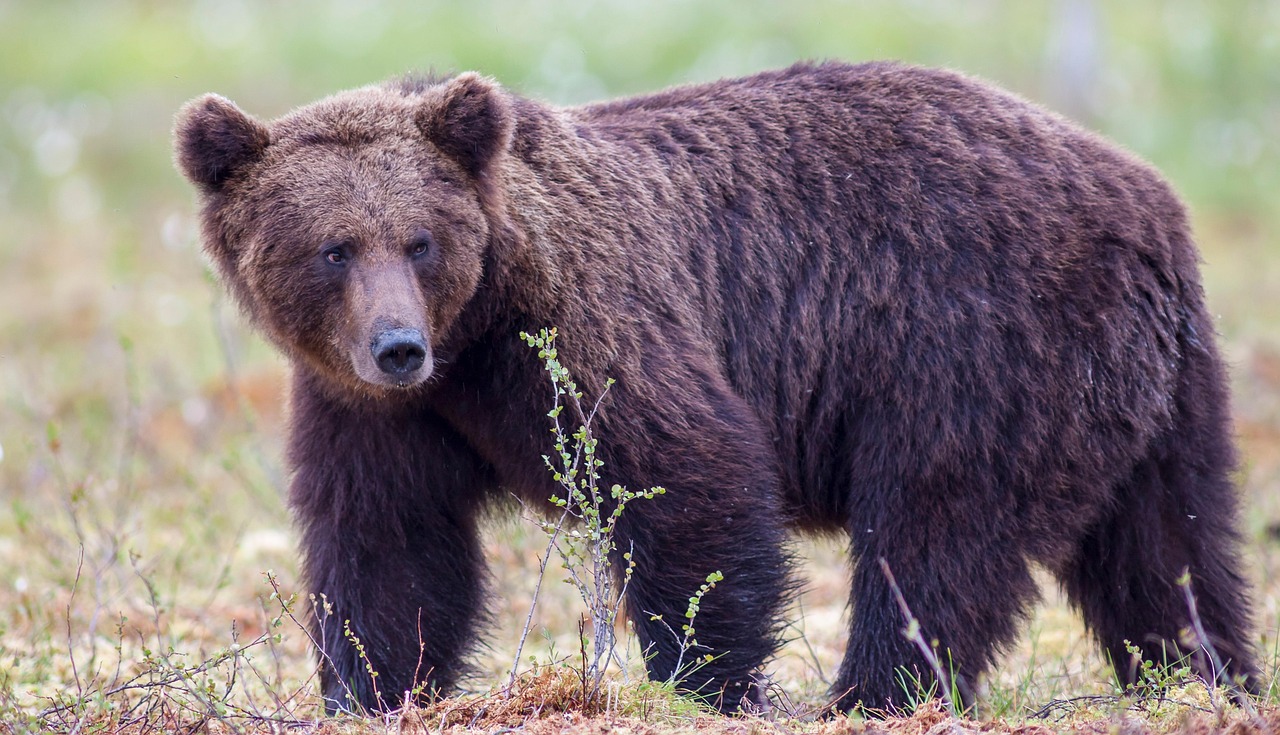
If we are talking about which animal is the most likely to kill you in a single encounter, a top contender would be the North American brown bear, though the total number of deaths from brown bear attacks is not high, cited at 82 since 1784. Fewer than 1,500 grizzlies now live in Idaho, Montana, Washington and Wyoming according to the National Wildlife Federation, but they are bulky yet extraordinarily agile, can run up to 35 miles per hour and have been known to attack humans in a predatory way.
Bears are firmly established as one of the most dangerous animals in the USA, with three species of bear native to North America, and though all three species can be threatening, the brown bear and grizzly bear have established themselves as the most terrifying class of bear. These massive creatures can appear suddenly in backyards near wilderness areas, turning a peaceful evening into a life-threatening encounter.
Coral Snake – The Colorful Killer
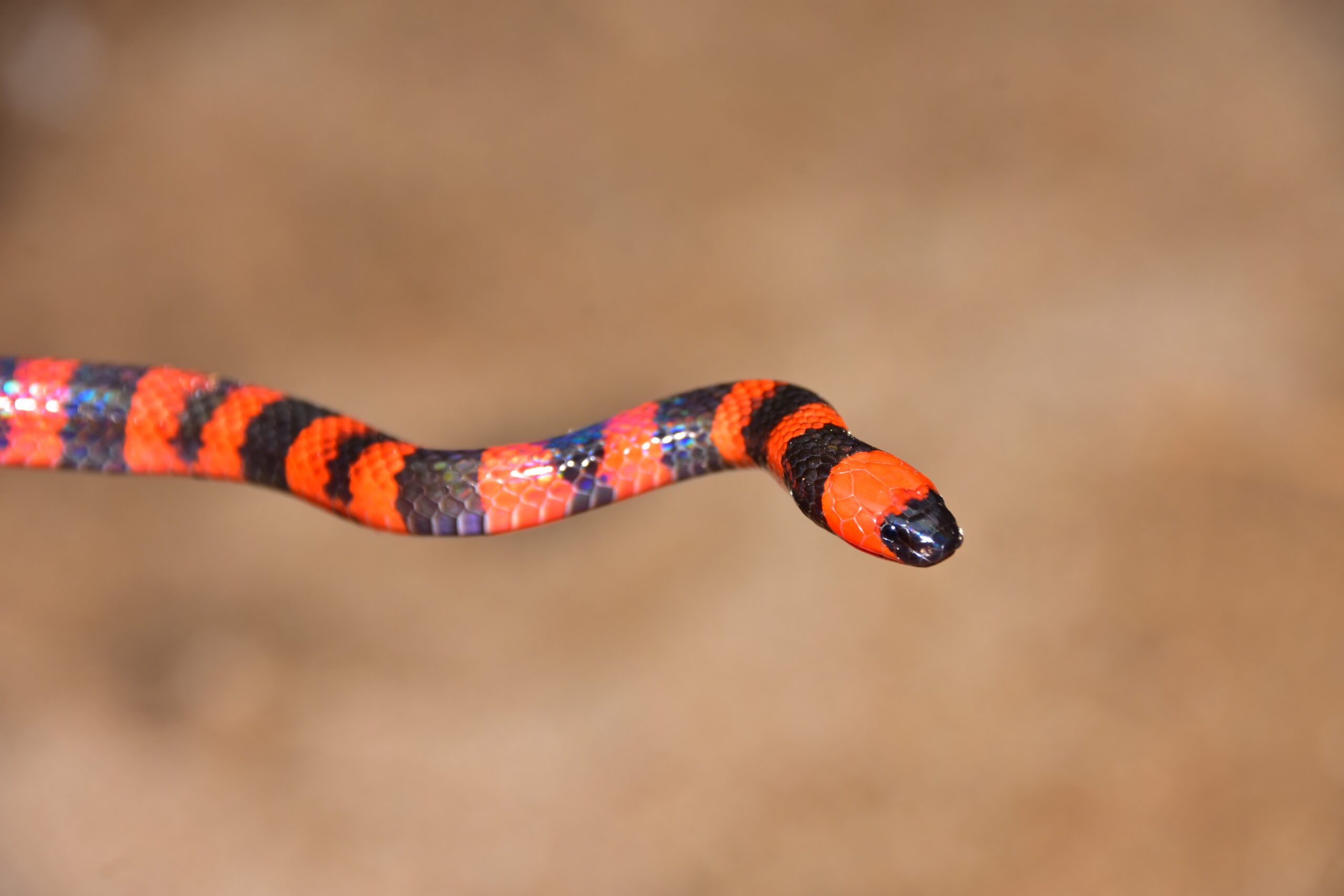
Found in the Southern USA, particularly in Florida and neighboring states, the coral snake’s venom is highly neurotoxic, affecting the respiratory system and potentially leading to death if antivenom is not administered quickly. In the Southeast, venomous Coral Snakes have a distinct red, yellow, and black banding that wards off potential predators. Despite their small size, these snakes pack one of the most potent venoms of any North American species.
The famous rhyme “red touches yellow, kills a fellow” helps identify these dangerous serpents, though the coral snake’s shy nature means encounters are relatively rare. However, when they do occur in residential areas, the consequences can be severe. Their neurotoxic venom can cause respiratory paralysis, making immediate medical attention absolutely critical for survival.
Cottonmouth Snake – The Aggressive Water Moccasin

Unlike many venomous snakes that prefer to flee when confronted, cottonmouths are known for their aggressive nature and willingness to stand their ground. These semi-aquatic vipers are commonly found near water sources, including backyard ponds, drainage ditches, and even swimming pools in the southeastern United States. Their distinctive defensive behavior involves opening their mouth wide to display the white interior that gives them their common name.
Cottonmouths are particularly dangerous because they often inhabit areas where people recreate or work, such as around fishing spots, boat docks, and water gardens. Their potent hemotoxic venom can cause severe tissue damage, and unlike some other pit vipers, they’re more likely to inject venom when they bite rather than delivering a “dry bite.”
American Coyote-The Backyard Invader
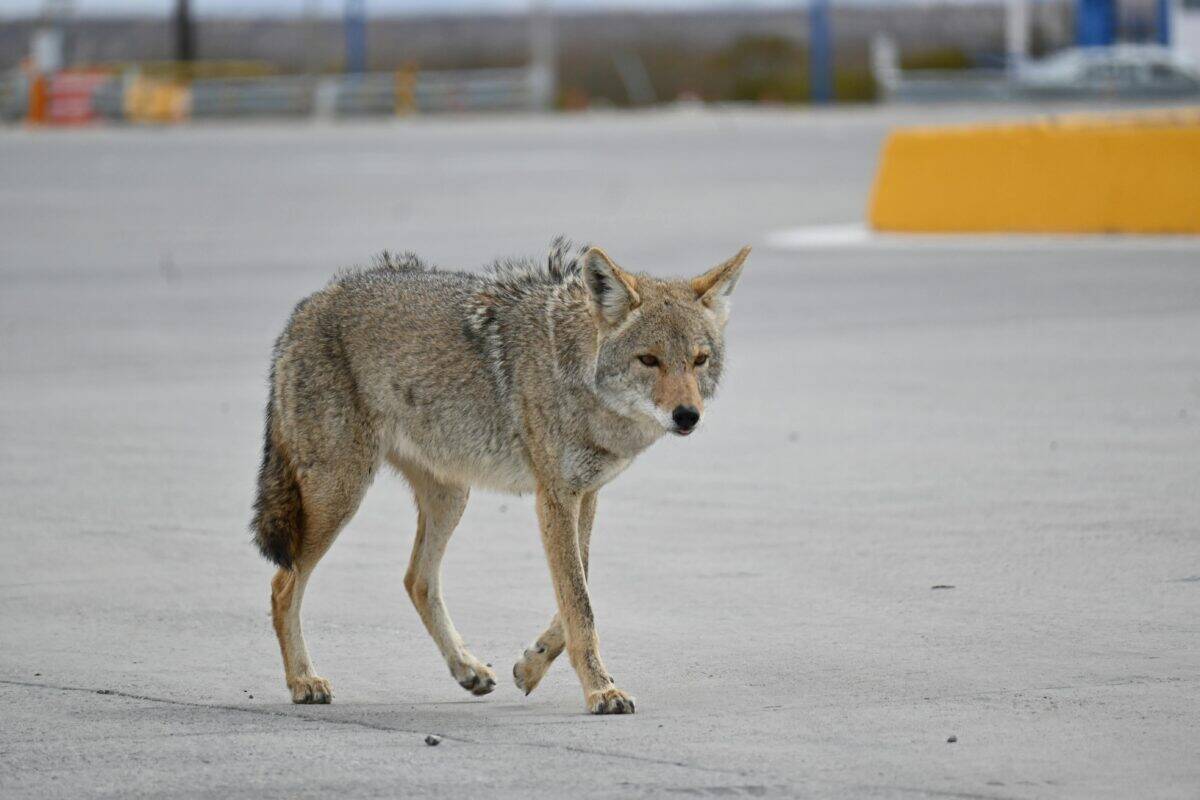
Coyotes are highly adaptable predators, and as urban sprawl pushes deeper into their natural habitat, they’re becoming increasingly common visitors in American backyards—especially in search of food like small pets, garbage, or fallen fruit. While they generally avoid humans, they can become bold and potentially dangerous when they lose their natural fear and begin associating neighborhoods with easy meals. This is why coyote encounters, including pet attacks, have been steadily rising in cities across the country. California reports the highest incidence of coyotes showing up in urban and suburban areas, particularly in densely populated regions like Los Angeles and its surrounding neighborhoods.
Arizona Bark Scorpion – The Tiny Desert Death
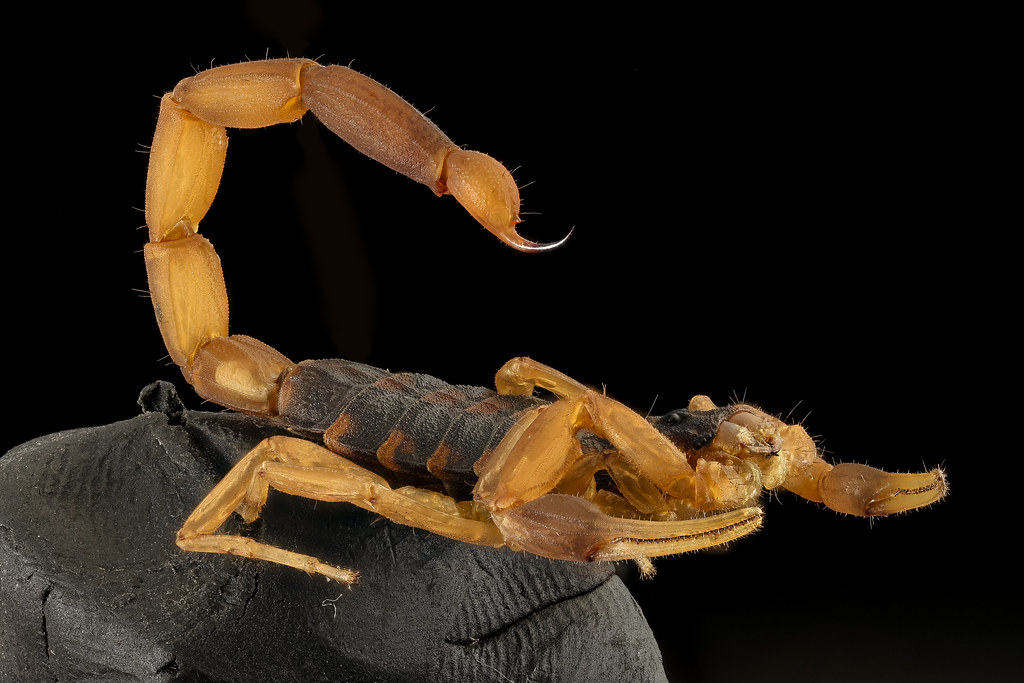
The Arizona Bark Scorpion has established itself as the most potent species of scorpion in the USA, and carries a potentially lethal sting; in the 1980’s, there were over 800 deaths reported in Mexico as a direct result of the Bark scorpion. These small arachnids are excellent climbers and can scale walls, trees, and even find their way into homes through tiny cracks and crevices.
What makes bark scorpions particularly dangerous is their ability to hide in dark spaces during the day, then emerge at night to hunt. They can be found in shoes, bedding, towels, and other common household items. Their sting causes excruciating pain, numbness, and in severe cases, respiratory distress. Children and elderly individuals are at highest risk for life-threatening complications from bark scorpion envenomation.
Polar Bear – The Arctic Predator Moving South

Among the world’s top predators, polar bears are simply enormous, often weighing three or four times the average black bear, with between 4,000 and 7,000 bears living across the north and west of Alaska. It’s thought that human encounters with polar bears are likely to increase as melting ice forces them south to find food. Unfortunately the first fatal attack in 30 years took place this year in Wales, a tiny and remote community just below the Arctic Circle.
Climate change is pushing these massive predators into closer contact with human settlements as their traditional hunting grounds disappear. Unlike other bears that might be intimidated by human presence, polar bears view humans as potential prey. Their incredible size, strength, and predatory instincts make them perhaps the most dangerous bear species when encountered in backyard settings near Arctic communities.
Eastern Diamondback Rattlesnake – The King of Venomous Serpents

The US has its fair share of venomous snakes and between 7,000 and 8,000 bites occur each year, with rattlesnakes being the country’s largest venomous snakes and the eastern diamondback rattlesnake is the largest and deadliest of them all. These massive serpents can reach lengths of up to 8 feet and possess fangs over an inch long, capable of delivering enormous quantities of potent hemotoxic venom.
Eastern diamondbacks are ambush predators that rely on their excellent camouflage to remain hidden until prey comes within striking range. Their distinctive rattle serves as a warning, but when surprised or cornered, they can strike with lightning speed. The volume of venom they can inject in a single bite is sufficient to kill multiple adult humans, making any encounter potentially fatal without immediate medical intervention.
American Bison – The Thundering Giant

Standing at 6ft and weighing a hefty 1.5 tons, the American Bison is the biggest land animal in the United States of America, and unlike the African water buffalo, the American Bison has a much less volatile personality, and will rarely attack unless provoked. Despite their size and awkward appearance, American Bison’s can reach speeds of 40mph; a direct hit from a Bison in full charge equates to being hit by a truck.
While bison don’t typically wander into suburban backyards, they can be encountered in rural properties near national parks and wildlife refuges. These massive animals may appear docile, but they are wild creatures with unpredictable temperaments, especially during rutting season. Their sheer size and power means that even a casual encounter can turn deadly if the animal feels threatened or cornered.
Moose – The Gentle Giant with a Temper

The largest member of the deer family, moose can measure up to six feet at shoulder height, and fairly easy to see in northern parts of the US and Alaska, this charismatic animal is an incredible sight in the wild but can pose real dangers when it feels threatened. Despite their seemingly gentle nature, moose are responsible for more human injuries in Alaska than bears, wolves, and all other wildlife combined.
During rutting season, bull moose become extremely aggressive and territorial. Cow moose with calves are equally dangerous, as they will charge anything they perceive as a threat to their young. With their massive size, sharp hooves, and surprising speed, an angry moose can easily kill a human. Their tendency to wander into residential areas in search of food makes encounters in backyards near wilderness areas a real possibility.
Stinging Insects – The Tiny Killers

If we simply mean which animals kill the most Americans per year, the answer would be insects, more specifically stinging insects such as wasps, bees and hornets. This is because many people are allergic to their stings and die from anaphylaxis, with between 2011 and 2021, 788 people dying as a result of these types of stings in the USA. These seemingly harmless insects are actually among the most deadly creatures you’ll encounter in your backyard.
The danger lies not in the potency of their venom, but in the severe allergic reactions they can trigger in sensitive individuals. Even people who have never had allergic reactions before can suddenly develop anaphylaxis, making every sting potentially life-threatening. The ubiquitous nature of these insects means encounters are inevitable for most people, making them statistically more dangerous than many larger, more fearsome predators.
Box Jellyfish – The Translucent Terror
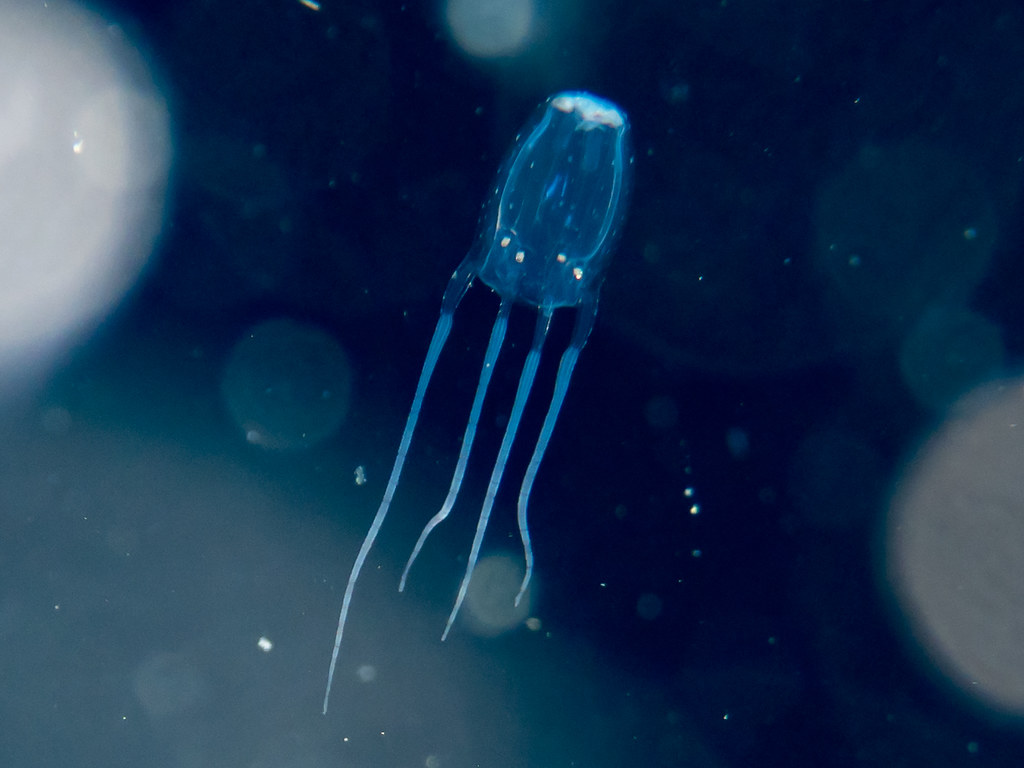
One of the world’s most venomous animals and by far the deadliest jellyfish, the infamous box jellyfish boasts long tentacles covered in stinging cells that contain extremely strong poison, and slightly less deadly species are found around Hawaii, the US Virgin Islands, Florida and California. Severe box jellyfish stings can kill inside a few hours, while symptoms include intense pain, blistering, abdominal pain, breathlessness, headaches, muscle spasms, nausea and vomiting.
While technically not a backyard animal, box jellyfish can pose a threat to those with waterfront properties or private beaches. Their nearly transparent bodies make them almost impossible to see in the water, and their tentacles can extend several feet from their bell. Even minor contact with these tentacles can result in excruciating pain and potentially life-threatening envenomation, making any coastal backyard swimming a potentially deadly activity.
Conclusion

The reality of America’s deadliest backyard animals is both fascinating and sobering. While we often worry about exotic threats from distant lands, some of our most dangerous encounters happen right outside our back doors. From the seemingly innocent deer that causes more human deaths than any large predator, to the tiny spiders hiding in our garden sheds with venom potent enough to cause serious harm, nature’s most lethal residents are closer than we ever imagined.
What’s perhaps most surprising is that size doesn’t always correlate with danger – some of the smallest creatures on this list pack the deadliest punch. The key to coexisting safely with these animals lies in understanding their behavior, respecting their space, and taking appropriate precautions when working or playing in areas where encounters might occur. Remember, most of these animals don’t seek out human contact; they’re simply trying to survive in an increasingly human-dominated landscape. With proper awareness and preparation, we can minimize our risk while still enjoying the incredible wildlife that calls America home.
Did you expect that the gentle deer grazing in your yard could be more dangerous than a grizzly bear?
- 15 Not So Nice Dog Breeds That Seniors Might Want to Avoid - August 19, 2025
- 15 Poisonous Plants That Could Be Growing in Your Yard Right Now - August 19, 2025
- The 20 Deadliest Animals Found in U.S. Backyards - August 19, 2025

